Tokyo part 2
So it wasn't "tomorrow" as promised. Time flies by and I find that creating the picture show on the blog takes time to organize. I could write daily blogs without pictures, but I find that is not what this blog is about. So here I am leaving Tokyo on the Shinkansen or bullet train to Hiroshima. A 5 hour ride which gives me time to write and once in awhile glance at the world outside zooming by.
What is our big take in experiencing Tokyo? The civil etiquette! This giant city unlike New York (which is less than half Tokyo's population size) is quiet, very quiet. No horn blowing cars.
 |
| Reinforcement of etiquette |
People whisper instead of talk loud on the walkways. No talking on phones (a lot of texting though), no smoking on the streets, everybody and I literally mean everybody walks on the left side.
 |
| The only noise maker |
 |
| They keep coming |
You should see morning rush hour near the towering office buildings, when the salarymen and women in long winding throngs walking fast enter buildings, guided by officers directing them into airlinelike serpentine queues to an escalator so as not to slow down the pace of accessing the building. Absolutely amazing. 35 million people seemingly "disappearing" in a quiet city.
 |
| Orderly chaos no talking just moving |
They live in a metropolitan area of 5200 sq miles (or 13.500 sq km) compared to the greater New York metropolitan area, which has 6800 sq miles (or 17.500 sq km). And "only" 8.5 million people live in New York.There are more people living in Tokyo than in the whole of California.
Everybody bows slightly when encountering each other. Nobody crosses streets when there is a red light.
Everybody cleans up after themselves, bringing their trays and or cups to designated stations and bins. There are no cleaning crews in an average Starbucks, customers do the clean ups. The train stations that ferry millions of travelers everyday are meticulously clean (although here they use crews to do that).
 |
| Clean bathrooms no paper to dry hands would make a mess |
You try to walk in New York City into a toilet at rush hour and see if you like the sights and smells. Here you seem to be the first customer of the day all the time. How do they do that? Japanese are most likely the only people in the world that like to be Japanese, not emulating the rich west or trying to emigrate away from their country.
 |
| Girls posing for me |
They seem to feel that they have the best society, where small children are tought in Kid Play World centers how grown ups work as police officers, accountants, bank tellers, chefs etc. etc. They play there as if they are doing their father's mother's or any of their role models jobs and earn play money as income. But in the end it instills the required work ethic this nation is famous for.
We met a South African efficiency expert that has lived for the last 21 years in Japan who gave us some statistics: one quarter of all japanese live in Tokyo, with an average income of 60,000 dollars, spending up to $17-18,000 on a 1,000sq ft or smaller apartment in the greater downtown area.
 |
| A public bench |
They work an average of 10 hrs a day and most have 1 hour or longer commutes. There are no slums or real poverty in Japan, no homeless people roaming the streets (the only "beggars" I saw are Buddhist monks) and being a disgrace to your family or coworkers still leads to suicide.
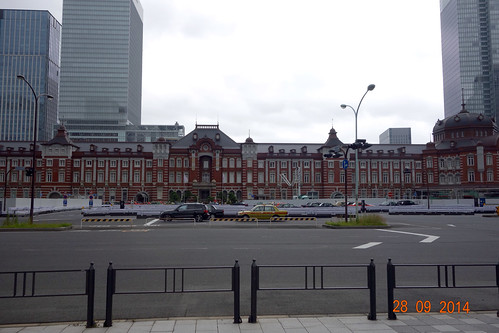 |
| Tokyo central station after 9 am |
You wil find no graffiti anywhere, tattoos are frowned upon. If my modest wife would ever go with me to an onsen (public bath) she would witness that people with tattoos have to cover the tattooed part of their body with cloth or so I am told
 |
| Again rush hour is over, where is everybody |
A day riding the metro system is very illuminating on how this society applies the above civil etiquette system by which they live. First if you, the foreigners, are seemingly lost in finding the right tunnel to the right metro, someone will stop in their tracks to offer help. On the platform people line up on exactly designated spots, where the train doors will open, letting everybody off first, before boarding.
When the doors close you find yourself either seated or standing in a very quiet cabin, with people texting or staring away from seeking eye contact. The info screen above the doors indicate where you are or where you are going, whether left or right doors will open, what your connection options are on the next station.
They remind you not to talk on phones and to please read papers without intruding on other peoples space. During the heavy morning and evening rush hour times the trains have women only cars, so that the ladies don't feel uncomfortable with potential unwelcome contact.
 |
| Traditional |
While talking to our South African efficiency expert sipping decaf coffee in Starbucks (they made decaf special for us as they do not have that on their menu) we witnessed a miniature scramble on the famous Shibuya square, where all stop lights change to red for traffic allowing people to stream from all directions into the square. We were told that around 7-8 pm it would look like a sea of ants scurrying around. Must be one of the few time Japanese can be disorderly.
 |
| A sample of the Shibuya scramble |
Well all in all I wished to describe to you in this blog how we were awed by a people that has been raised to behave so uniformly in ways Miss Manners could only dream of for the citizens of our countries in the Western Hemisphere.
 |
| Glass and steel and towering |
Next blog more about what we saw and did in Tokyo during the first three days of our tour.
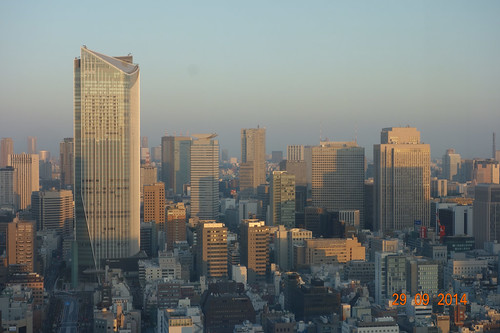



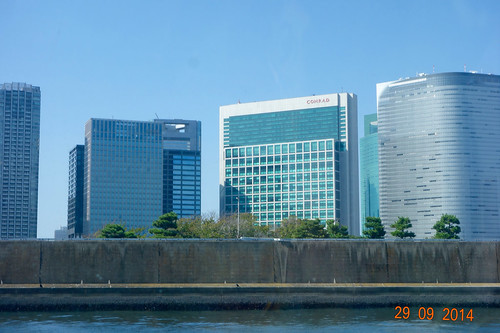

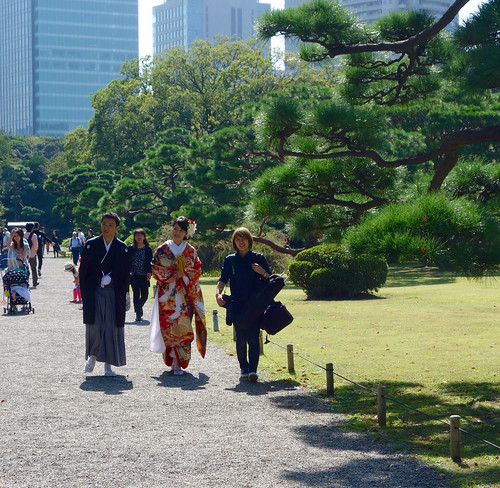


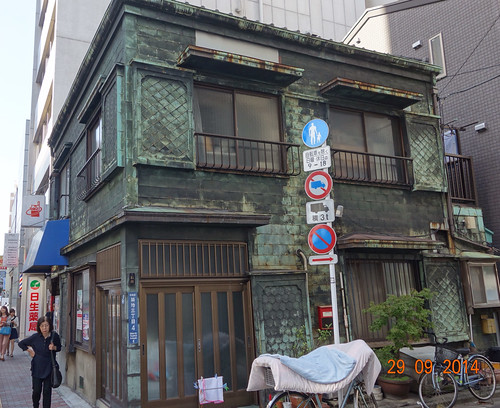

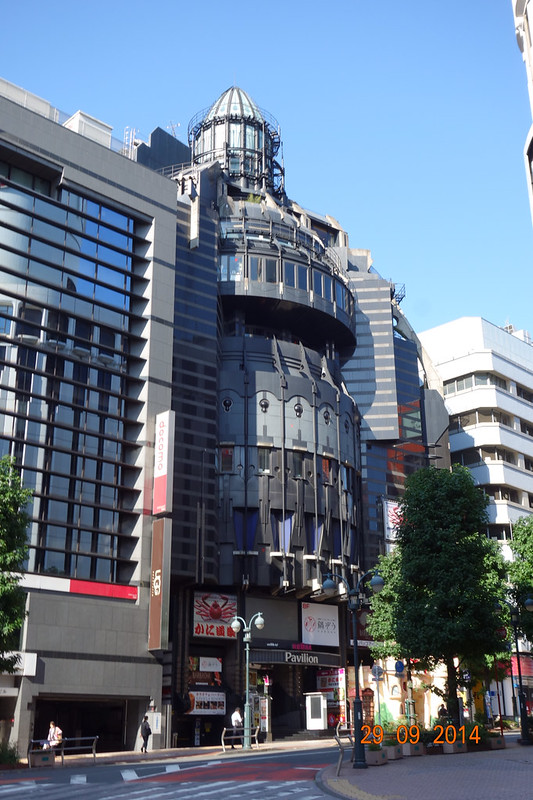


Comments
Post a Comment